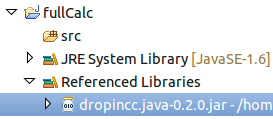DSLs in java is hard.
DSLs are rarely discussed in java community. Or, at least comparing to other dynamic languages’ world, DSLs in java is much harder to create.
Why does this happen?
According to Martin Fowler’s comments on DSLs, they are separated mainly to two kinds: internal and external DSLs.
I believe that, the ability of how a specific general purposed programming language could be customized to an internal DSL relies on the language’s meta-programming features.
Some languages, especially dynamic typed ones, have ability to customize its syntactical appearance at runtime. By intercepting their class defining life-cycles, executing fail-over strategies when method or field missings, or doing presentation substitutions via sophisticated macro systems or even, directly change their parse tree at runtime. All those incredible features are the magic behind internal DSLs.
But, we sadly found that java has none of those magic stuff to help building internal DSLs. There’s little meta-programming features in java. Annotations? Perhaps one rare creature, but its not enough.
Maybe the only way to create internal DSLs in java is to design a set of Fluent Interface API. It’s great, but you won’t have much space on customizing the syntax of your DSL.
Then, seems that the possible ways to create real-world, sophisticated DSLs in java are always turns out to be external-DSLs. But, this won’t be easy, always, since the creation of computer world.
